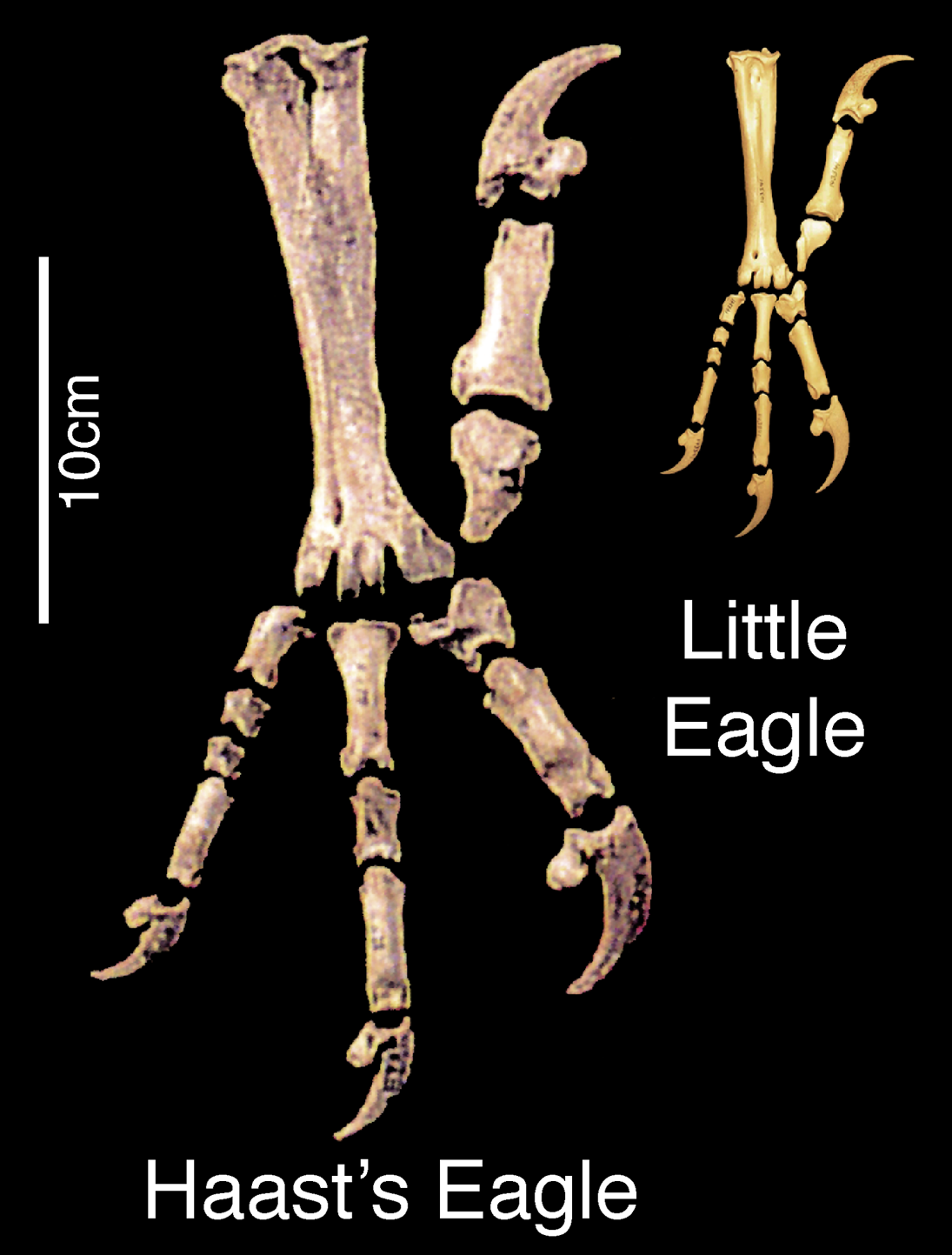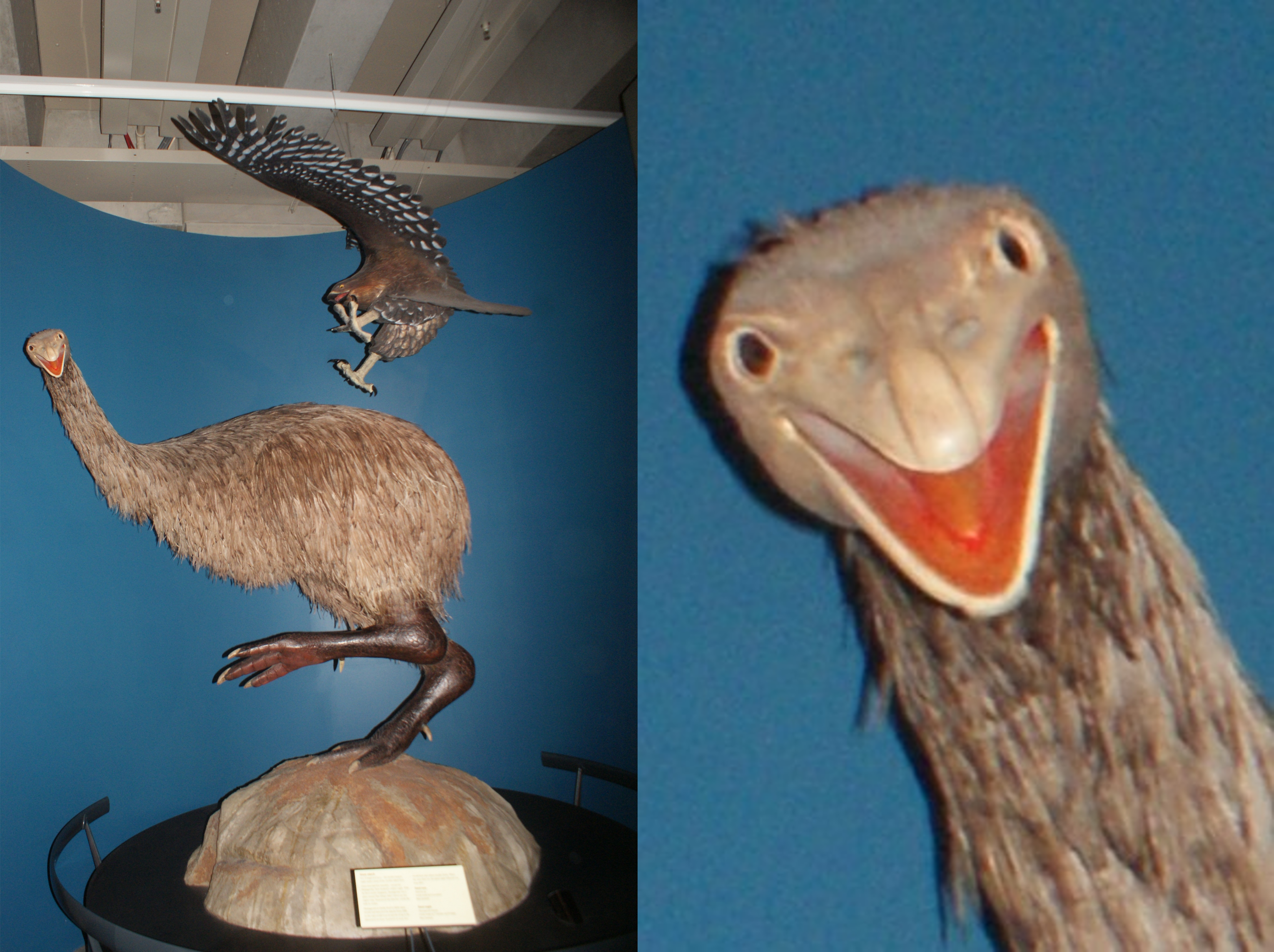If you thought eagles nowadays were impressive, best believe they’ve got nothing on Haast’s eagle (Harpagornis moorei).
The rest of this article is behind a paywall. Please sign in or subscribe to access the full content.
Appearing in New Zealand sometime between 700,000 to 1.8 million years ago, everything about this now-extinct beast of a bird was supersized, from its hooked beak down to its tiger paw-sized feet and talons.
In fact, it’s the largest eagle species ever known to have lived, with a wingspan of up to 3 meters (9.8 feet) – that’s about 1.5 times as long as Michael Jordan is tall – and the females weighed a whopping 17.8 kilograms (39 pounds). For reference, the largest living eagle species, Steller’s sea eagle, weighs between 5 to 9 kilograms (11 to 20 pounds).

A comparison of a Haast’s eagle claw versus that of a little eagle.
Image credit: Bunce et al., PLoS Biology 2005 (CC BY); modified by IFLScience
It’s not just its size (and talons) that would’ve made Haast’s eagle an intimidating figure, it’s what it did: eating moa. Yep, those massive flightless birds that humans managed to hunt into extinction shortly after first settling in New Zealand (although some people are trying to bring them back).
While they weren’t going to fly off anywhere, moa wouldn’t have been an easy meal for most, given their size; mature, female South Island giant moa are estimated to have weighed up to 249 kilograms, nearly 14 times heavier than the biggest Haast’s eagles.
Haast’s eagle was built for this job, however, with a 2021 study having determined that it used a combination of tactics we see in modern-day eagles and vultures to get a hold of its giant prey. It’s thought that it first used its massive talons to knock over and damage moa (more eagle-like), before delivering the killer blow in a more vulture-like way with its beak.

An appropriate response from the moa tbh.
If it had no problem ending moa, it’s easy to wonder if it may have picked off a human every now and then, too. That may well have been the case, with missionary and writer James West Stack recounting in his book South Island Maoris: a sketch of their history and legendary lore that the pouākai – the Māori name for a legendary monstrous bird, believed to refer to Haast’s eagle – “seized and carried off men, women, and children, as food for itself and its young.”
Eventually though, Haast’s eagle would meet its own unfortunate fate. It’s thought to have gone extinct around the same time as moa, roughly 500 to 600 years ago. That isn’t altogether surprising; it’s hard to stay alive when your primary source of prey has disappeared.
Will someone attempt to bring it back alongside the moa? We’re not sure we can say that we hope so – those talons might be better off staying in the past.
Source Link: The Largest Eagle To Ever Live Had A 3-Meter Wingspan And Ate Moa For Lunch